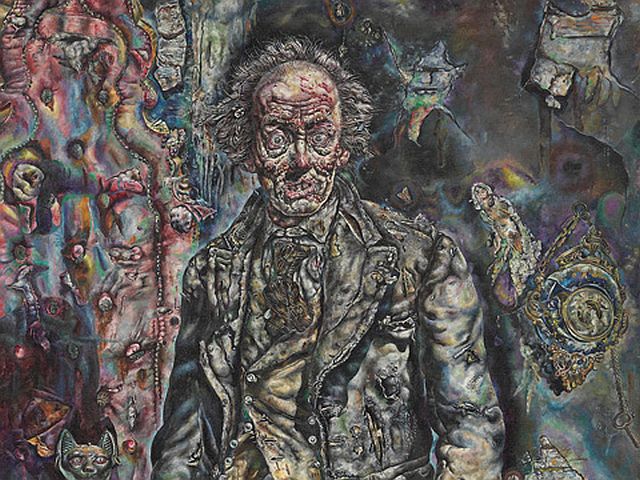
No one looked at the aging process of the human body quite like Chicago artist Ivan Albright (1897–1983). His obsession with the body’s physical decay earned him the well-deserved title, “master of the macabre.”
The Art Institute of Chicago has curated more than 30 Albright in a retrospective called “Flesh,” now showing through August 5, 2018.
Based on Albright’s 1928 “Flesh,” the exhibit covers many of his paintings. They demonstrated every wrinkle, boil and fold of human skin, equally depicting unflattering portraits of men and women.
Albright’s process was painstaking and labored, often taking him many years to complete a work. Some paintings he just gave up on to pursue other projects.
“That Which I Should Have Done I Did Not Do (The Door),” considered his most important work, is a prime example of a painting that took him ten years. But it leaves us with an acknowledgement of life’s brevity and the road often not taken.
Former Indiana University faculty member, Jerry Findley, PhD, said, “This work focuses on moments that humanity finds hard to address – about regrets and the human experience.”
Albright’s portrayal of the body’s decay led him to his most important commission – painting The Picture of Dorian Gray for the 1945 film of Oscar Wilde’s haunting novel. This hideous, well-detailed portrait captures the essence of Wilde’s “Gray” as he descends into madness.
“The works they selected were excellent choices of Albright’s depiction of flesh of the human body… the vulnerability of time that overtakes all of humanity,” said Findley.
In exploring “the way of all flesh” throughout his career, Albright purposefully pushes the envelope of decency to shock his viewers.
“Flesh” is at the Art Institute of Chicago, 111 S. Michigan Ave., Chicago, through Aug. 5, 2018. For more admission and other information, call (312) 443-3600 and visit AIC/IvanAlbright.
Mira Temkin
